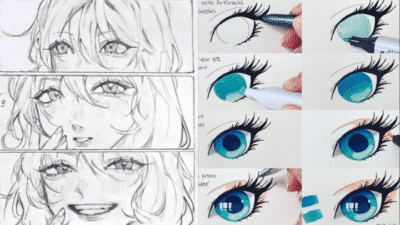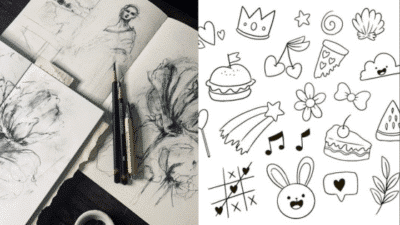Capturing genuine connection in art can be challenging, but couple pose drawings offer a straightforward way to express emotion and intimacy between characters. By learning how to draw dynamic couple poses, you can add depth and realism to your artwork while telling a compelling visual story. With the right references and techniques, your couple drawings can bring relationships to life on the page.
Whether you want to illustrate romance, friendship, or even playful interaction, understanding the fundamentals of drawing couples is essential. Inspire your next piece by exploring a range of pose ideas, from tender and affectionate moments to energetic and fun interactions. Developing this skill will expand your creative possibilities and enhance the overall quality of your art.
Key Takeaways
- Couple pose drawing adds emotion and realism to artwork
- Using reference images and techniques improves results
- Building a collection of poses expands your creative options


Understanding Couple Poses Drawing
Drawing couples involves representing two characters in relation to each other, capturing both physical interaction and emotional connection. The success of couple drawings often depends on understanding pose dynamics, selecting a drawing style, and choosing the right reference for the intended mood.
Defining Couple Poses
A couple pose is any drawing arrangement where two subjects interact or are positioned together, showing their relationship through proximity, touch, or shared movement. These poses may be as simple as two people sitting side by side, or more dynamic such as dancing, hugging, or holding hands.
Such drawings focus on body language and physical gestures to illustrate affection, companionship, or narrative context. Your sketch should consider anatomy, balance, and relative size so both figures appear natural and connected. Clear lines help show where limbs overlap and how energy moves between the two bodies.
Well-composed couple poses can convey subtle details like shyness, trust, or playfulness. Proper alignment and scale also help prevent awkward overlaps or unrealistic tangencies in your work.
Common Drawing Styles for Couples
There are several art styles used for couple drawings, each affecting the mood and clarity. Realistic sketches aim for accurate anatomy and natural gestures, using careful shading and proportion. Stylized or cartoon approaches simplify forms, emphasize key body language, and often feature exaggerated expressions for emotional impact.
Line art is a popular choice, focusing on clean, defined outlines to show pose and gesture. This style is often used for references or digital art. Silhouette sketches use solid shapes to highlight interaction and pose rather than facial details or clothing.
Referencing online galleries and pose boards such as Pinterest can help you find trending or creative pose options that suit your style. Consistency in style keeps your couple drawings recognizable and easy to interpret, especially in multi-panel comics or animation.
Importance of Pose Selection
Selecting the right pose shapes the narrative and emotional tone of your drawing. A close embrace suggests intimacy, while back-to-back poses can suggest conflict or independence. The way couples touch, look at each other, or interact creates focal points and emphasizes key narrative elements.
Pose choice also affects technical aspects such as foreshortening, composition, and the level of overlap between figures. Balancing challenge and skill level is important—complex poses can be rewarding but require careful construction.
Consider using reference photos or pose sketch bases, especially for dynamic or unusual couple arrangements. This helps maintain correct proportions and expressive anatomy throughout your drawings. Proper pose selection supports storytelling and ensures your couple drawings are both appealing and authentic.


Techniques for Drawing Couple Poses
Mastering couple poses involves understanding body language, using accurate visual references, and choosing digital techniques that suit your workflow. Approaches range from sketching directly from life to leveraging high-quality vector resources for clean, reusable illustrations.
Life Drawing Methods
Life drawing is a reliable way to capture natural interaction between two figures. Drawing from real models lets you study subtle posture shifts, eye contact, and realistic touchscreen points. You get firsthand experience with proportion, perspective, and anatomical differences that define couples’ poses.
When setting up a life drawing session, position your models to mimic the intimacy or distance you want to portray. Focus on gesture sketches first. These quick sketches capture movement and relationship more than specific details.
After a few gestures, refine your drawing with light construction lines. Look for how forms overlap and interact, like arms around shoulders or hands holding. Pay attention to weight distribution—are they leaning toward, away from, or holding each other in balance?


Using Reference Images
Reference images are useful when life models aren’t available. Resources like Pinterest and Tumblr often provide a wide variety of couple pose references, ranging from casual selfies to close embraces or romantic kisses. Many of these platforms offer drawing bases and pose references specifically for artists.
When selecting references, choose images that provide clear views of both figures. Breaking down the pose using basic shapes—ovals for heads, rectangles for torsos—makes complex interactions easier to digest. You can also create a reference folder to organize images by mood, pose type, or perspective.
If possible, use multiple references to better understand 3D relationships and anatomy. Adjust the images as you draw—change angles, body types, or expressions—to create more original illustrations while learning from real examples.
Vector and EPS Illustration Techniques
Digital artists often use vector graphics and EPS (Encapsulated PostScript) formats to create clean, scalable couple pose illustrations. Vectors let you adjust lines, shapes, and curves easily without losing quality, making them ideal for professional portfolios or commercial projects.
Begin with a simple line sketch in your vector software, such as Adobe Illustrator. Use the Pen Tool or Shape Tool to block out major forms before adding details. You can create reusable templates of common poses (hugging, holding hands, etc.) for future projects.
Layering, grouping, and color-coding elements in your EPS file helps manage complex couple interactions. With vectors, adjusting posture, scale, or composition is as simple as dragging anchor points. This flexibility enhances both efficiency and precision in your couple pose illustrations.


Optimizing Images for Couple Pose Art
Effective couple pose art requires careful attention to both the orientation of your images and the technical details such as resolution and color composition. These choices impact clarity, focus, and the mood your finished drawings convey.
Choosing Image Orientation
Selecting the ideal image orientation shapes the storytelling potential of your couple pose art. For close-up or intimate scenes, portrait orientation helps emphasize expressions and body language. When you want to show more environment or movement, landscape orientation is better for including context, props, or backgrounds.
A square orientation offers a balanced—almost symmetrical—composition, making it suitable for social media sharing or thumbnails. For dramatic scenes or group couple poses, panorama or panoramic images capture a wide view and multiple figures, but they may reduce visible detail for individual subjects. Consider the primary use for your artwork before you pick an orientation.
Resolution and Color Composition
A high image resolution ensures fine details are captured and modeled clearly in your drawing. For digital references, aim for at least 300 DPI if you plan to print, or at least 1920 pixels wide for screens. Low-resolution images often introduce blurring, making sketching accurate anatomy or expressions more difficult.
Color composition influences depth and atmosphere in your art. Use harmonious or contrasting color schemes to lead the viewer’s eye where you want focus—such as the couples’ faces or the interaction between them. When referencing images, check that you avoid harsh overexposure or deep shadows which obscure details. Use a simple palette when starting out, then add complexity as you refine the drawing.


Licensing and Usage of Couple Pose Drawings
Understanding how licenses work for couple pose drawings can help you use or share your artwork legally. Each license type offers different rights and limitations for personal, educational, and commercial use.
Royalty-Free and Editorial Licenses
Royalty-free licenses give you broad rights to use images and drawings with few restrictions after a single purchase or download. You can use royalty-free couple pose drawings for personal work, teaching, and commercial projects without paying each time you use them.
These licenses do not mean exclusive use. Others may use the same drawing under similar terms. Editorial licenses limit use to non-commercial projects such as blogs, news, or educational content.
Key details:
| License Type | Usage Rights | Restrictions |
|---|---|---|
| Royalty-Free | Commercial, Personal, Educational | No resale as-is, non-exclusive |
| Editorial | News, Blogs, Educational (non-commercial) | No advertising, no products |
Always check if attribution is required and read all license terms before downloading or sharing.
Extended Licenses and Safe Search Filters
Extended licenses allow wider or more specific use than standard royalty-free options. If you plan to use couple pose drawings in merchandise, resale, or large distribution (like print runs over a set number), you likely need an extended license.
Look for extended license terms for:
- Print-on-demand shirts or posters
- Large advertising campaigns
- Multi-user or client projects
Always enable safe search filters when searching drawing poses or references, especially for work or classroom settings. Safe filters help exclude sensitive or explicit content from results, which supports compliance with workplace policies and audience appropriateness.
Using the correct filters ensures resources remain suitable for all viewers and helps you avoid including unwanted material in your projects.


Enhancing Couple Pose Drawing Collections
To elevate your couple pose drawing collection, it is important to source high-quality visual references, explore new technology, and use dynamic media for inspiration. This approach ensures you have a broad variety of poses and fresh perspectives to support your artistic process.
Exclusive Content and Stock Photos
Utilizing exclusive and stock photos gives you access to pose references that are both diverse and professionally shot. Stock websites like Dreamstime provide curated libraries, often with unique couple poses unavailable in open web searches.
Subscribers sometimes receive access to limited collections or time-sensitive offers, such as flash30% discounts for premium packs. These deals let you build a comprehensive collection more affordably.
Exclusive content is particularly useful for finding natural expressions and specific body language. When choosing images, prioritize those with clear lighting and visible anatomy to maximize usefulness for your sketches and studies.
Incorporating AI Generated Content
AI-generated images present an efficient way to expand your reference collection beyond traditional photography. By using AI platforms, you can specify details such as pose type, character features, and even scene mood.
This method allows you to create unique reference images tailored directly to your project needs. AI tools are effective for generating diverse body types, clothing styles, and lighting effects not easily found in stock libraries.
However, always check for anatomical accuracy and adjust any inconsistencies before using these references in your drawing process. Combining AI-generated content with real-life photos can strengthen your understanding of how to stylize or pose your characters.


Utilizing Videos for Pose References
Videos offer dynamic pose references that static photos cannot provide. By pausing at different frames, you capture a wider variety of gestures, transitions, and natural movement in a couple’s interaction.
Platforms like YouTube feature dance routines and acting scenes that showcase real human motion and spontaneous connection. Screen capture tools make it easy to collect still frames for your poses.
Watching slow-motion sections highlights subtle shifts in weight, posture, or hand placement. This helps you add realism and variety to your figure studies and maintain accuracy in gesture work.
- 1.6Kshares
- Facebook0
- Pinterest1.6K
- Twitter0



